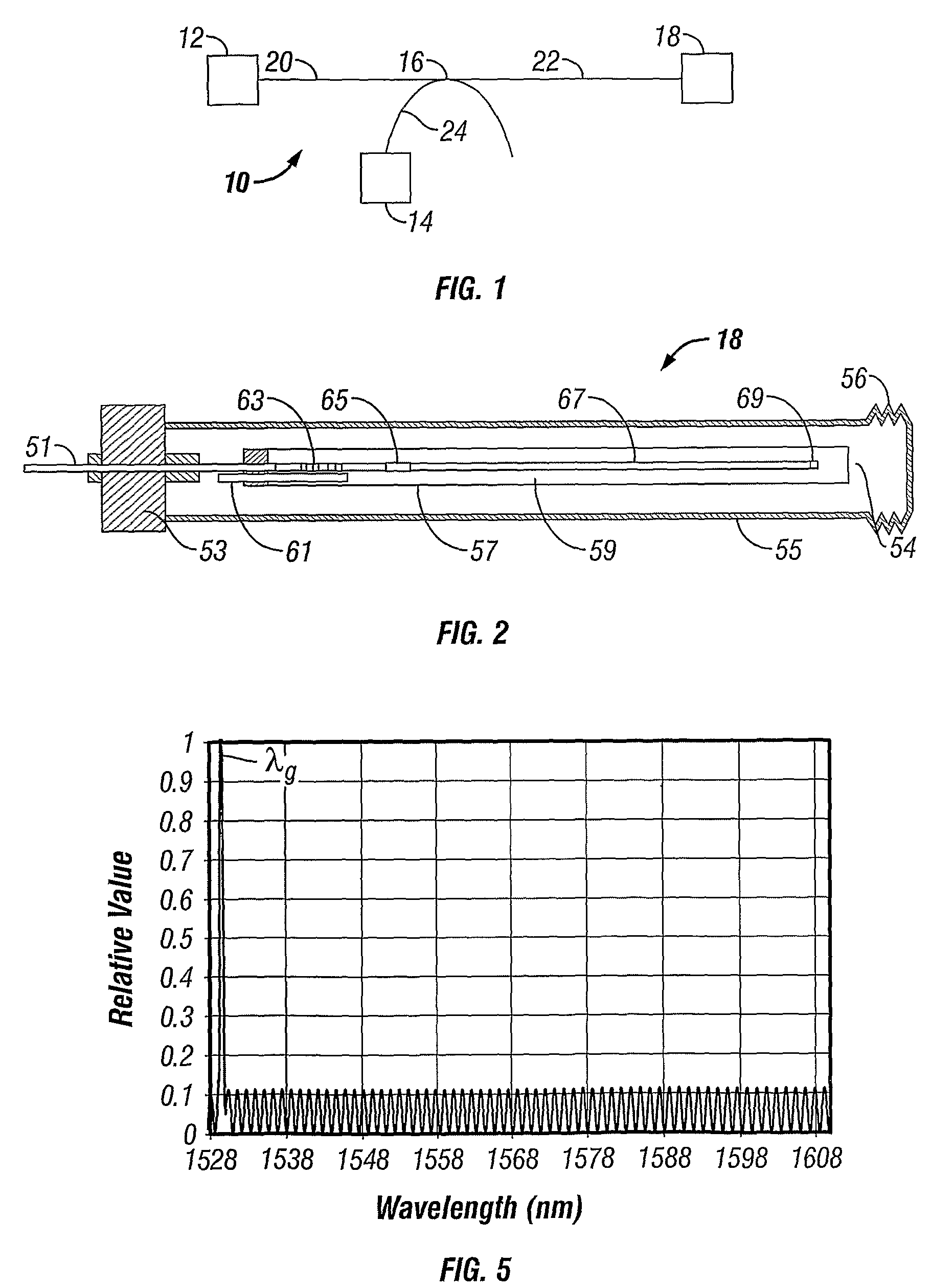Fiber optic temperature and pressure sensor and system incorporating same
a technology of temperature and pressure sensors and fiber optic fibers, applied in the field of fiber optic sensors, can solve the problems of large dynamic range, unsuitable for measuring temperature, large bandwidth, etc., and achieve the effect of simple and effective compensation for temperature-pressure cross-sensitivity
- Summary
- Abstract
- Description
- Claims
- Application Information
AI Technical Summary
Benefits of technology
Problems solved by technology
Method used
Image
Examples
Embodiment Construction
[0026]As used herein, the term “upstream” is generally defined as disposed closer to the light source of the system. Conversely, “downstream” generally means disposed further away from the light source of the system.
[0027]Turning now to FIG. 1, an exemplary fiber optic sensing system 10 according to the invention generally includes a light source 12, a beam splitter 16, a spectral analyzer 14 and one or more fiber optic sensors 18. A waveguide 20 (such as a fiber optic waveguide directs the light generated by the light source 12 to the beam splitter 16. The beam splitter 16 directs this light to the fiber optic sensor(s) 18 over fiber optic waveguide 22, where spectral components of such incident light are reflected back along the waveguide 22. The beam splitter 16 directs the desired components of the returning light to the spectral analyzer 14, preferably via a fiber optic waveguide 24. The light source 12 provides different wavelength components and may be realized by a tunable l...
PUM
| Property | Measurement | Unit |
|---|---|---|
| reflectivity | aaaaa | aaaaa |
| angle | aaaaa | aaaaa |
| diameter | aaaaa | aaaaa |
Abstract
Description
Claims
Application Information
 Login to View More
Login to View More - R&D
- Intellectual Property
- Life Sciences
- Materials
- Tech Scout
- Unparalleled Data Quality
- Higher Quality Content
- 60% Fewer Hallucinations
Browse by: Latest US Patents, China's latest patents, Technical Efficacy Thesaurus, Application Domain, Technology Topic, Popular Technical Reports.
© 2025 PatSnap. All rights reserved.Legal|Privacy policy|Modern Slavery Act Transparency Statement|Sitemap|About US| Contact US: help@patsnap.com



